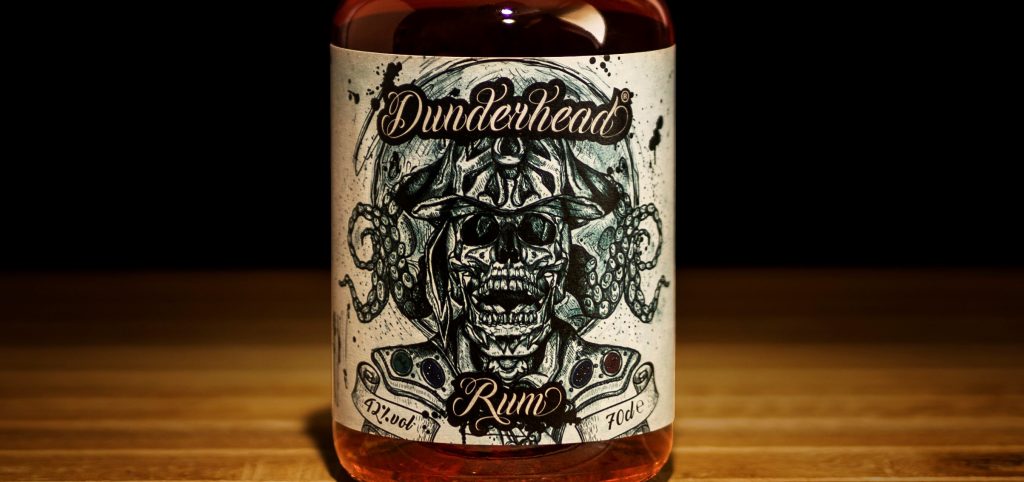There’s a bit of a rum theme this week at Master of Malt. No particular reason, we just love the stuff. We’re particularly excited about a bottle that has just arrived in our warehouse: it’s funkier than Fela Kuti, fruitier than a tube of Fruit Pastilles and riper than a prize-winning pineapple, it’s Dunderhead rum!
There’s no mistaking high ester Jamaican rum. That smell: pineapples, bananas, fruit so ripe it’s almost rotten. So wrong and yet so perfectly right. That’s what you get with Dunderhead rum. It’s a blend of rums from around the Caribbean but it gets its name from its most noticeable component country, Jamaica.
Dunder is the leftovers in the pot after distillation. In most rum producing countries, these would be used a fertiliser. Not so in Jamaica, it goes into so-called dunder pits. Essentially holes in the ground full of rotting fermented molasses. Mmmmmmm, rotting fermented molasses! You hear rumours that sometimes animals* wander into these pits and die, all adding to the funk. This might sound revolting but all the bacteria working away creates esters. Esters are volatile compounds produced by fermentation; they include ethyl butyrate, which smells of pineapple and ethyl acetate, which smells of nail varnish.
This dunder is used to add complexity to fermentations with fresh molasses. It might sound bizarre but it’s not unique to Jamaica. Similar things happen in bourbon with sour mash and in the production of baijiu. In Scotland, many distilleries keep their old pine fermenters in order to encourage the build up of bacteria that create interesting flavours. The Jamaicans just take it really far. Fermentations take place over many days with natural yeasts, all good for creating those magical flavours.
Modern multi-column distillation would remove most of these flavours so high ester rums tend to be made with shorter old school columns or traditional pot stills. Distilleries such as Long Pond and Hampden are famous for producing this style of rum, though Appleton Estate, probably Jamaica’s most famous distillery, produces a much cleaner spirit and doesn’t use dunder. These rums are delicious drunk young for the full pineapple and banana effect but also certain esters are formed during the ageing process giving you balsamic and Madeira-like flavours. Extremely high ester rums can be so strongly flavoured as to be almost undrinkable on their own but they are highly prized for blending. A special class of rums known as ‘continental flavour’ are produced with off-the-scale esters and used in minuscule quantities to create rums in Germany. You sometimes see this bottled on their own and they make an amazing experience. Be warned, a little goes a long way.

Can you spot the esters?
So that’s dunder and now back to Dunderhead. This uses some of that Jamaican magic blended with other rums from around the Caribbean before bottling at 42% ABV. Look closely at the label and you’ll see that the jewels around the neck of the skull make up ester compounds: ethyl propionate (smells like pineapple), ethyl acetate (nail polish), amyl acetate (bananas) and ethyl butyrate (more pineapple). Very educational. The taste is approachable but you’ll still feel the thunder of dunder. Expect flavours of banana, pineapple, orange zest and honey. Then there’s sweet toffee, brown sugar and molasses with a grassy green banana flavour.
How should you drink it? Well, this is a mixing rum par excellence, those bold high ester notes can compete against anything. Try it mixed with ginger ale or Coca-Cola, or in a Mai Tai. We spoke with Peter Holland from the Floating Rum Shack and he reckoned it would be good in Trader Vic’s Grog:
2 parts Dunderhead rum
1 part lime juice
1 part fresh pineapple juice
1 part passion fruit syrup
Dash of Angostura bitters
Shake all the ingredients with lots of crushed ice. Pour, ice and all, into an Old Fashioned glass and garnish with a lime wedge and a sprig of mint.
Dunderhead rum is available now from Master of Malt.
*These are just rumours. No animals were harmed in the production of Dunderhead rum.
